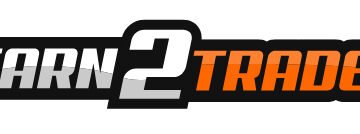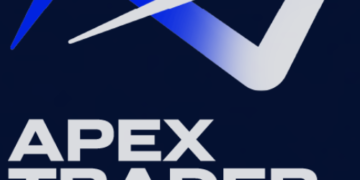Supply and Demand Trading (ULTIMATE Guide) in 2025 – Learn How Elite Traders Use Smart Money Strategies
Discover the ultimate guide to supply and demand trading in 2025. Learn how smart money creates zones, the 3 laws of supply and demand, and how beginners can trade like professionals. Plus: exclusive Apex Trader Funding 80% OFF prop trading evaluation discount!
Introduction: Why Supply and Demand Still Matters in 2025
In the fast-paced world of day trading futures, many strategies come and go—but supply and demand trading remains a timeless edge. This method focuses on following “smart money”—the big banks, hedge funds, and institutions that leave behind footprints in the form of supply and demand zones.
In 2025, traders are leveraging this concept not only for futures like ES (S&P 500 futures), NQ (Nasdaq futures), Oil, and Gold, but also across forex and stocks. For beginners, supply and demand offers a clear, rules-based approach to identifying trade entries and exits.
But here’s the truth: many traders fail at this method because they don’t understand the 3 Laws of Supply and Demand Trading. This guide will break down those laws in detail, show how to identify valid zones, and explain how to integrate them into a trading system.
Before diving in, if you’re serious about trading futures with funded accounts, don’t miss this:
📢 80% OFF Apex Trader Funding Evaluations – Pass in 1 Day!
🚀 Apex Trader Funding is offering a LIFETIME 80% DISCOUNT on all evaluations!
💰 80% OFF ALL Evaluations & Future Months
💰 Pass in just 1 day!
💰 $50 resets for ALL Evaluations
💰 $140 one-time PA activation fee
💰 Take unlimited evaluations – up to 20 funded accounts!
🔥 Apex has already paid out over $564 MILLION to traders!
🔹 Use Code: PROPDEALS at checkout
🔹 OR Click Here: https://tinyurl.com/ApexPropDeals
👉 Don’t miss this prop trading evaluation discount—start today with one of the best prop trading firms for beginners!
What Is Supply and Demand Trading?
At its core, supply and demand trading seeks to answer one question:
👉 Where are the big institutional buy and sell orders sitting?
- Demand Zones: Areas where institutional buy orders are waiting. When price hits these levels, demand overwhelms supply, causing sharp upward moves.
- Supply Zones: Areas where institutional sell orders are stacked. When price revisits these zones, sellers dominate, often creating reversals.
Think of demand zones like a solid floor where a basketball bounces quickly upward, while supply zones act like a steep hill where a car eventually stalls out and rolls back down.
Rapid movement away from these levels signals unfilled institutional orders—and that’s where retail traders can align with smart money.
The 3 Laws of Supply and Demand Trading (2025 Edition)
1. Only Chart Zones With Momentum
Not every bounce matters. A valid supply or demand zone requires rapid movement away from the level.
- Look for three or more strong candles leaving the zone.
- Avoid zones with slow, choppy price action—they often act as weak support/resistance instead.
- Momentum = proof that institutional orders were present.
2. Focus on Fresh, Recent Zones
Fresh zones are powerful because institutional orders remain unfilled. Over time, each retest “eats away” at those orders.
- First and second retests are best.
- Old zones lose reliability as orders get absorbed.
- Think of zones like a slice of watermelon—the more bites taken, the less there is left to enjoy.
3. Never Use Zones Alone
Relying solely on supply and demand zones can lead to false entries. Combine them with other confirmations such as:
- Break of trendlines
- RSI divergence
- Higher lows forming in a demand zone
- Order flow / tape reading confirming buyers or sellers present
This multi-factor approach gives traders a true edge instead of blind entries.
Practical Example: Trading Gold With Supply & Demand
- Demand Zone Example: Price dropped into a fresh base, then bounced with strong candles. Entering long here aligned with institutional buy orders.
- Supply Zone Example: Gold reached $2067 and stalled, showing seller strength. Traders who recognized this supply zone had a clear short entry.
The lesson: zones work best when combined with rapid movement, freshness, and other trade confirmations.
Why Supply and Demand Is Perfect for Prop Trading
If you’re trying to pass prop firm evaluations, supply and demand trading is ideal:
- Clear rules: Helps traders avoid random entries.
- High R:R trades: Fresh zones often produce explosive moves.
- Scalable: Works across ES, NQ, Oil, and Gold futures.
This is why many traders use it while working with firms like Apex Trader Funding, Take Profit Trader, Tradeify, DayTraders, and Bulenox.
And with cheap futures prop firm evaluations now available, there’s never been a better time to sharpen your edge with this strategy.
Call-to-Action: Start Trading Like the Pros
Supply and demand trading remains one of the most powerful strategies for day traders in 2025. But mastering it requires discipline, context, and patience.
If you’re ready to trade like an elite prop trader, take the next step:
📢 80% OFF Apex Trader Funding Evaluations – Pass in 1 Day!
💰 Get your prop trading evaluation discount today
💰 Trade with one of the best prop trading firms for beginners
💰 Secure cheap futures prop firm evaluations and start scaling up
👉 Use Code: PROPDEALS at checkout
👉 Or click here: https://tinyurl.com/ApexPropDeals
🚀 Start your evaluation today and learn how to survive and thrive in the markets—just like the pros.
Final Thoughts
The 3 Laws of Supply and Demand Trading—momentum, freshness, and multi-factor confirmation—are timeless principles that continue to give traders an edge in 2025. By aligning with institutional orders, retail traders can improve their odds of success in the markets.
Whether you’re brand new or looking to refine your edge, supply and demand trading can help you approach markets with clarity, structure, and confidence.
✅ Apex Trader Funding Evaluations:
- Prop trading evaluation discount
- Cheap futures prop firm evaluations
- Best prop trading firms for beginners






No Comments
Leave Comment